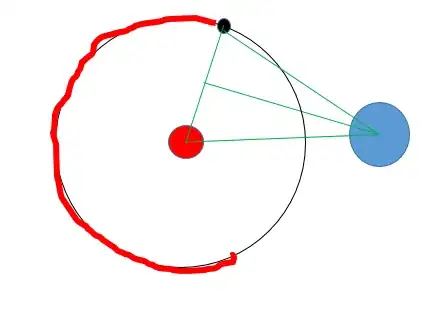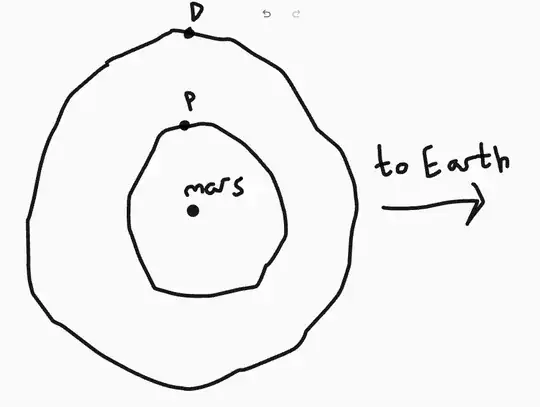Which one is closer to the Earth, Phobos, Deimos or Mars? None of the answers that I find actually answer my question.
Asked
Active
Viewed 276 times
-3
-
7It will be better if you add more information to your question and say what you have tried or why the answers you saw didn't actually satisfy you ? – Kavin Ishwaran Apr 07 '22 at 17:04
-
4What answers did you find, what sources did you consult? Did you use a programme like Stellarium? Did you consider that the moons revolve around Mars? – planetmaker Apr 07 '22 at 17:06
-
Kind of related: https://astronomy.stackexchange.com/q/47317/16685 – PM 2Ring May 17 '22 at 03:44
-
I don't think your recent edit improved the question any better. – Nilay Ghosh May 17 '22 at 04:31
2 Answers
11
To expand on fasterthanlight's excellent answer: on average, Mars is the closest. The reasoning behind this claim perhaps is best illustrated with a (not to scale) picture showing that Mars and a Martian moon are equidistant from the Earth only when they form an isosceles triangle. Hence, for the majority of the orbit, Mars is closer (the red part of the orbit).
Notes:
- The same argument holds for both Martian moons.
- The orbital plane of each Moon doesn't contain the line segment from Mars to Earth as shown in the cartoon. However, a similar argument holds for any offset.
- I define distance from the center of gravity. If you use distance from surfaces, the effect will be greater.
- The eccentricity of the Martian moon orbits is very low, so not considered here.
Connor Garcia
- 16,240
- 4
- 43
- 96
6
It depends on which orbital phase each body is in. In the below (poorly drawn) diagram, Mars is the closest as it is merely a straight line to the Earth. If Phobos is in front of Mars while Deimos is behind it, it is closer, but if both are in front, Deimos is closer. Mars is only the closest when both moons are behind it.
WarpPrime
- 6,653
- 1
- 24
- 61

